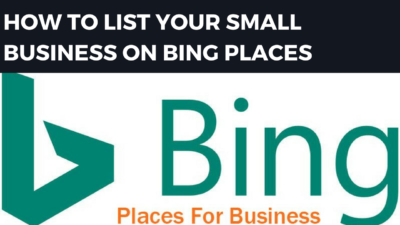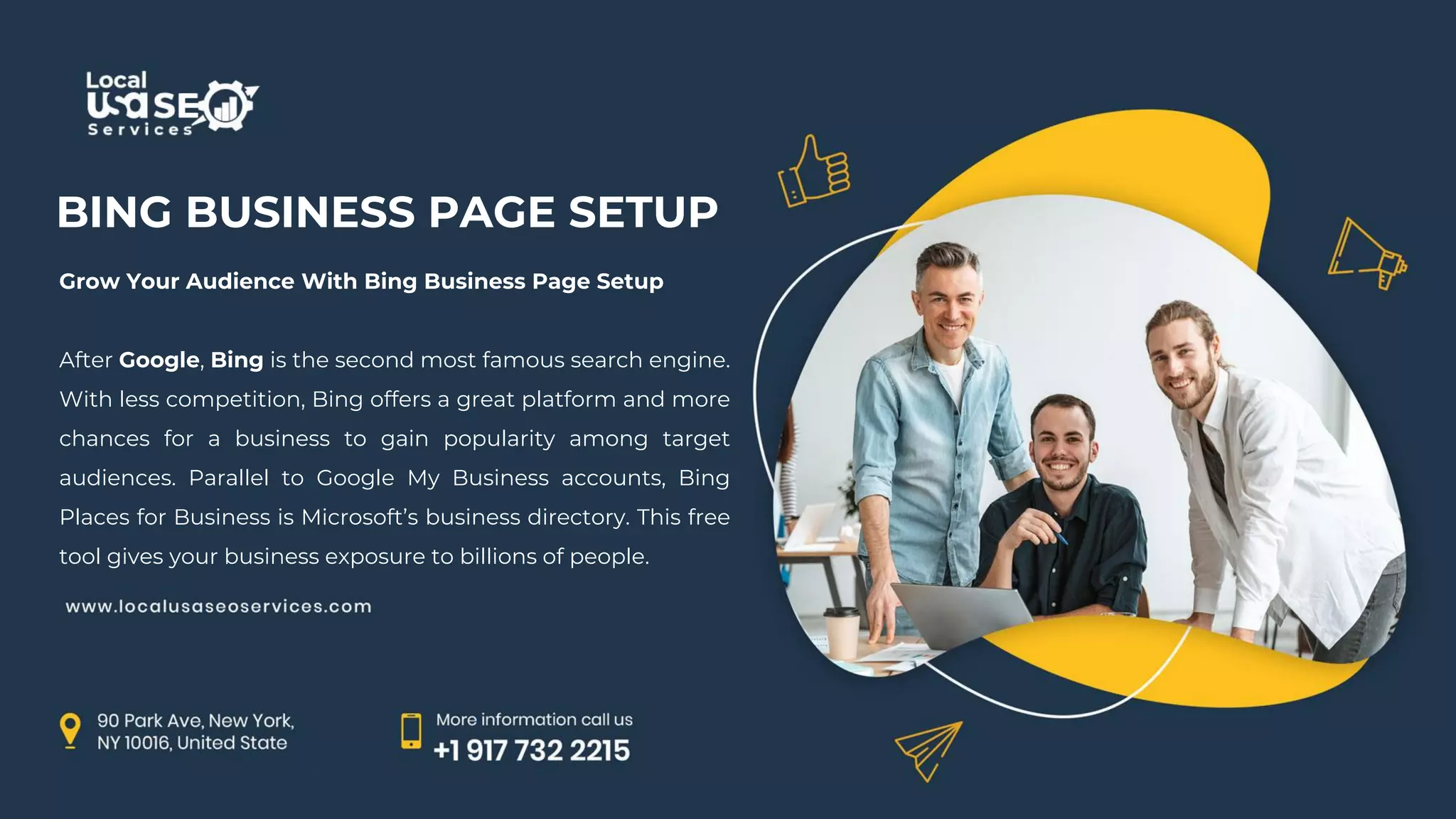
In today’s digital landscape, having a strong online presence is crucial for businesses of all sizes. While Google often dominates the conversation when it comes to search engines, it’s crucial not to overlook the power of Microsoft Bing. Bing, while not as widely used as Google, still commands a significant share of the search industry, and its Bing Business platform offers a valuable chance for businesses to connect with potential customers. So, let’s dive into the world of Bing Business and explore how it can help you grow your business!
What is Bing Business and Why Should You Care ?
Bing Business, powered by Microsoft, is essentially a suite of tools and services designed to help businesses manage their online presence on the Bing search engine. Think of it as Bing’s answer to Google My Business. It allows you to control how your business appears in Bing search outcomes, Bing Maps, and other Microsoft services. But why should you care ? Well, here’s the deal:
- boostd Visibility: A complete and maximized Bing Business profile ensures your business appears prominently when potential customers search for related search terms on Bing. More visibility means more opportunities to attract new customers.
- Improved Local search engine optimization: Bing Business is crucial for local search engine optimization. It helps you rank higher in local search outcomes, making it easier for customers in your area to find you.
- Enhanced Customer Engagement: You can use Bing Business to share updates, promotions, and other crucial information with your customers directly through Bing search outcomes. This can lead to boostd engagement and loyalty.
- complimentary Advertising: Setting up and maintaining a Bing Business profile is completely complimentary. It’s a cost-effective way to advertise your business and reach a wider audience.
Setting Up Your Bing Business Profile: A Step-by-Step Guide
Creating a Bing Business profile is a straightforward process. Here’s a step-by-step guide to get you started:
Related Post : bussines apps
1. Create a Microsoft Account: If you don’t already have one, you’ll need to create a Microsoft account. This is the same account you use for other Microsoft services like Outlook and OneDrive.
2. Visit Bing Places for Business: Go to the Bing Places for Business website (bingplaces.com) and sign in with your Microsoft account.
3. Search for Your Business: Bing will ask you to search for your business. If your business is already listed, you can claim it. If not, you can add it manually.
4. Enter Your Business Information: offer accurate and complete information about your business, including your business name, address, phone number, website, hours of operation, and business category. The more information you offer, the better.
5. Verify Your Business: Bing will need to verify that you are the rightful owner of the business. You can typically do this via phone, email, or postcard.
6. maximize Your Profile: Once your business is verified, take the time to maximize your profile. Add photos, videos, and a detailed description of your products or services. Highlight what makes your business unique and appealing to customers.
Optimizing Your Bing Business Profile for Maximum Impact
Creating a Bing Business profile is just the first step. To truly maximize its impact, you need to maximize it for search and customer engagement. Here are some tips:
- Use pertinent search terms: Incorporate pertinent search terms into your business description and other profile fields. Think about what terms potential customers might use when searching for your business on Bing.
- Add High-Quality Photos and Videos: Visual text is essential for attracting attention and showcasing your business. Use high-quality photos and videos that highlight your products, services, and overall brand.
- Encourage Customer Reviews: Customer reviews can significantly impact your search ranking and reputation. Encourage your customers to leave reviews on your Bing Business profile. Respond to reviews promptly and professionally, whether they are positive or negative.
- Keep Your Information Up-to-Date: Make sure your business information is always accurate and up-to-date. This includes your hours of operation, contact information, and any other pertinent details. Inaccurate information can lead to frustrated customers and lost business.
- Use Bing Places API: For larger businesses or those with multiple locations, consider using the Bing Places API to manage your listings programmatically. This can save you time and effort.
Leveraging Microsoft Advertising with Bing Business
While a complimentary Bing Business profile is a great starting point, you can further amplify your reach and visibility by leveraging Microsoft Advertising. Microsoft Advertising allows you to create targeted ads that appear on Bing search outcomes and other Microsoft properties. Here’s how it works:
- search term study: Start by conducting thorough search term study to determine the terms that your target audience is using to search for your products or services on Bing.
- Create Compelling Ads: Craft compelling ad copy that highlights the benefits of your products or services and includes a clear call to action.
- Target Your Audience: Use Microsoft Advertising’s targeting options to reach the right audience based on demographics, location, interests, and other factors.
- Set Your Budget: Determine your advertising budget and set bids for your search terms. You can select between manual bidding and automated bidding options.
- Track Your outcomes: Monitor your ad performance closely and make adjustments as needed to maximize your campaigns for maximum ROI.
By combining a well-maximized Bing Business profile with targeted Microsoft Advertising campaigns, you can significantly boost your online visibility and drive more traffic to your website or physical store.
Bing Business vs. Google My Business: Which is Right for You ?
It’s natural to wonder how Bing Business stacks up against Google My Business, the dominant player in the local search arena. While Google My Business undoubtedly has a larger user base, Bing Business offers several benefits that make it worth considering:
- Less Competition: Because Google My Business is so popular, it can be more challenging to rank highly in search outcomes. Bing Business, on the other hand, often has less competition, making it easier to stand out.
- Integration with Microsoft Ecosystem: If your business already relies heavily on Microsoft products and services, such as Windows, Office 365, and LinkedIn, Bing Business can seamlessly integrate into your existing workflow.
- Unique attributes: Bing Business offers some unique attributes that Google My Business doesn’t, such as the ability to add a virtual tour of your business and the option to create a Bing Offer to attract new customers.
Ultimately, the optimal approach is to use both Bing Business and Google My Business to maximize your online visibility and reach the widest possible audience. Think of them as complementary tools that can work together to boost your local search engine optimization and drive more business.
In conclusion, Microsoft Bing Business is a powerful tool for businesses looking to enhance their online presence and connect with customers. By leveraging its attributes and integrating it into your overall industrying plan, you can unlock new opportunities for growth and achievement. So, take the plunge and explore what Bing Business has to offer! You might be surprised at the outcomes.

